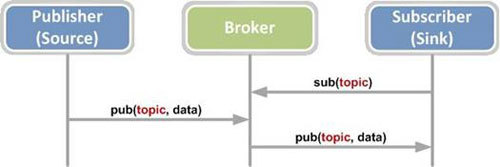Many came across this video stating we can generate power for a house for 1 day by just pedaling for 1 hour. Really?
Here's a screen shot of the video stopped a 6sec:
We don't see it for a long time, but here's the data.
- They generate 12 volts
- At a current of 10 amps
Let's explain quickly the difference between Power and Energy before we continue.
- Power is the rate at which energy is generated or used. The W or kW (thousand) is a unit of power.
- Energy is a measure of how much Power (fuel) is contained within something, or used by something over a specific period of time. Wh or kWh is a unit of Energy
Now, there is something call the first law of thermodynamics. It's called a LAW, not a theory. Laws cannot be broken. The first law state:
The first law, also known as Law of Conservation of Energy, states that energy cannot be created or destroyed in an isolated system.In simple term, you cannot create more Energy in a system that what was put in. So, if on my bike I create 120Wh of Energy, then I cannot have more than 120Wh of electrical energy out. Regardless of how many tricks (gears, wheels) and transformations (from 12v DC to 120v AC) you used.
Then you have the second law of thermodynamics. which state:
The second law of thermodynamics states that the entropy of any isolated system always increases.Simply, this means that you will always have loses in any energy conversions. In the bike example above, we have (see Wikipedia for numbers)
- Human power to pedal power conversion
- We can transfer of to 99% of the energy to the pedal. So loosing 1%
- Pedal to shaft, mechanical friction
- You can loose 1% to 7% in gearing's and 4% to 12% in chains and hubs. So anything from 5% to 19%. So medium of 12% lost.
- Shaft to generator output
- This can vary from 10% to 20% (source). So lets take 15% average.
- Then you have the electrical loss
- Converted: 5% to 15% - average of 10%
- Batteries : around 25%
The output showed on the screen shot, is probably after the electric generator, so this is before the electrical loss (10% + 25%).
So you see, there's nothing free about this energy and you need to be an athlete to generate that little energy.
Ok, now let's say we are pedaling for 1h and creating 120Wh of Energy. We will have 35% loss after that point, if we want to use this electricity. So we have around 78Wh of electricity saved in the battery and usable after conversion and transport.
What can we do with 78Wh?
Here's a graph of different appliances and their Energy needs.
Conclusion:
To state that this is free energy and that we can power a house for 1 day with 1 hour of pedaling is very misleading.It maybe true if your house only need a few LED light bulb, no refrigerator, no stove or microwave and maybe one cell phone charger.
And what is the cost of that big bike?
IF we really want to provide electricity for the 1.5 billions who needs it, this is not the solution. Cheap & reliable coal, gas or clean nuclear power is the solution.
Sources used for this:
- Wikipedia
- http://www.energylens.com/articles/kw-and-kwh
- http://www.mpoweruk.com/energy_efficiency.htm
- http://www.lowtechmagazine.com/2011/05/bike-powered-electricity-generators.html
- https://www.coursera.org/learn/energy-101
- https://www.boundless.com/chemistry/textbooks/boundless-chemistry-textbook/thermodynamics-17/the-laws-of-thermodynamics-123/the-three-laws-of-thermodynamics-496-3601/









